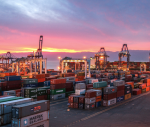You are here
A perilous macroeconomic moment
Apr 09,2023 - Last updated at Apr 09,2023
ITHACA — This is a perilous moment for the world economy, as stubbornly high inflation, bank failures, and geopolitical tensions threaten to derail growth. There are a few bright spots, with China and India projected to post around 5 per cent and 6.5 per cent growth, respectively, this year. As the latest update to the Brookings-Financial Times Tracking Indexes for the Global Economic Recovery (TIGER) demonstrates, however, the proliferation of risks and the tightening of financial conditions are taking a toll on business and consumer confidence and investment.
Inflation in major economies seems to have peaked as supply constraints ease, demand weakens, and some transitory factors, such as last year’s spike in energy prices, wane. Still, persistent above-target inflation leaves many central banks with little choice but to continue tightening, even if less aggressively than before. Complicating matters further is the banking-sector turmoil in some advanced economies, including the United States, which has undermined private-sector confidence and could, when paired with tighter financial conditions, hinder growth beyond this year.
The US economy continues to show surprising resilience despite numerous headwinds, with employment and consumption demand still growing robustly. Yet, the collapse of Silicon Valley Bank and Signature Bank last month augurs more trouble. Even if authorities can head off systemic risks, already-fragile business and consumer confidence may still take a hit. With inflation expectations easing, a “softish” landing is not out of the question but depends on how quickly the Federal Reserve tries to push inflation toward its target while seeking to limit damage to the financial sector. Moreover, the impending showdown over the federal debt ceiling could disrupt markets worldwide and adversely affect growth.
The eurozone and the United Kingdom seem to have put the worst of their woes behind them, though a robust recovery is hardly assured. Mild temperatures and falling energy prices helped both economies negotiate a difficult winter, but high inflation, especially when paired with anemic GDP growth, forces tough policy choices.
In Japan, both domestic consumption and exports continue to stagnate. If above-target inflation persists, the Bank of Japan could face pressure to reverse yield-curve control and abandon negative policy rates, which have kept the yen weak and provided limited support to domestic demand.
Low-income and frontier economies are suffering the most, because they face a triple whammy of higher debt-servicing costs, weak export demand, and limited policy space. But major emerging-market economies have held up quite well, even though some have experienced high inflation and weakening currencies relative to the dollar. Emerging markets’ overall resilience is a testament to their inherent dynamism, improvements in policy frameworks, and reduced vulnerability to external shocks, owing to lower levels of foreign currency-denominated external debt and sizable foreign-exchange reserves.
With its zero-COVID policy, and the disruptive effects of its abrupt reversal last December, largely in the rearview mirror, China looks poised to hit this year’s growth target of around 5 per cent, even if momentum slows. After a turbulent year, the property market is still beset by falling prices, which could dampen household demand and investment. But the government is signalling its commitment to economic stability by opting for continuity in critical policy roles, namely central bank governor and finance minister. These appointments will not, however, dispel concerns about the authorities’ renewed dirigisme, with the private sector under increasingly tight control.
India is poised for another year of strong growth, with previous economic reforms at last bearing fruit, although domestic demand is showing signs of waning. High (albeit declining) inflation has left the central bank with limited room for maneuver, and the government has varied some of its spending to support demand while aiming for fiscal discipline. But the country’s lengthy reform agenda remains incomplete, and the banking system continues to be burdened by non-performing loans, which will impede private investment.
Weighed down by various domestic and external factors, Brazil and Russia are likely to register modest growth, at best. Criticism of the central bank by Brazilian President Luiz Inácio Lula da Silva’s administration could damage the economy and fuel volatility in financial markets. Russia’s economy, flailing last year in response to sanctions and other knock-on effects of its war in Ukraine, appears to have stabilised.
Elsewhere, some middle- and low-income economies with high levels of debt denominated in foreign currencies and large current-account deficits, such as Ghana and Sri Lanka, are vulnerable to tightening conditions in global financial markets. Erratic domestic policies in countries are exacerbating their frailties. A stronger dollar, fueled by further interest-rate hikes by the Fed and perhaps also a flight to safety if turmoil continues, could add to these pressures. With global demand weak, currency depreciation and stronger exports will not cushion these economies.
Global risks are multiplying and spreading, and policymakers, especially central bankers, are floundering as they reach the limits of their powers. While major economies’ monetary policies have prevented economic growth from collapsing, they have also exposed serious financial weaknesses, adding to concerns about medium-term growth. For these and many other economies, embracing more productivity-enhancing supply-side, labour-market, and financial reforms is the best way to rebuild private-sector confidence and foster durable prosperity.
Aryan Khanna and Caroline Smiltneks contributed to this commentary.
Eswar Prasad, professor of Economics at Cornell University, is a senior fellow at the Brookings Institution and the author of “The Future of Money: How the Digital Revolution Is Transforming Currencies and Finance” (Harvard University Press, 2021). Copyright: Project Syndicate, 2023.













